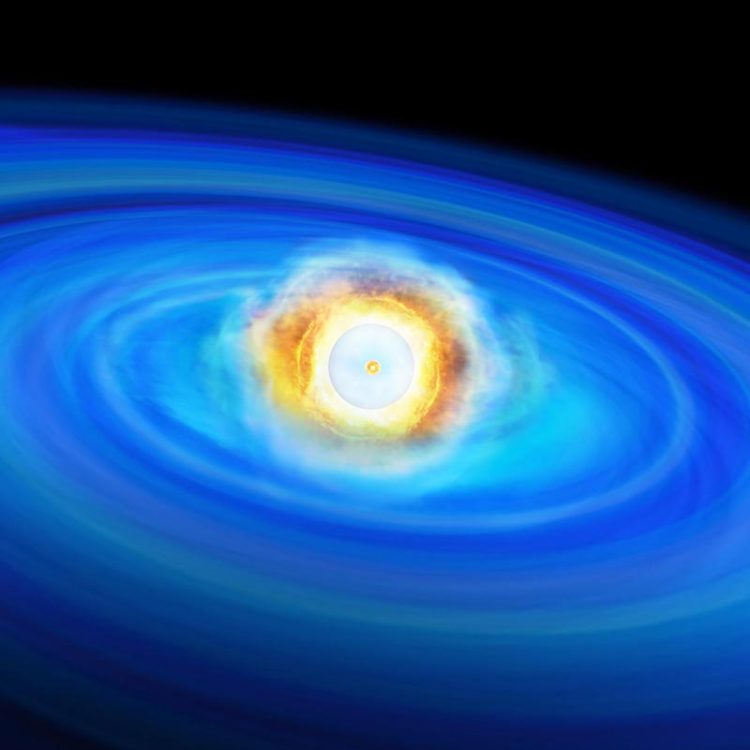Surface helium detonation spells end for white dwarf

The nuclear detonation of the surface helium layer triggered an inward shock wave, and now carbon nuclear fusion has begun at the center. Credit: Institute of Astronomy, University of Tokyo
Because of the uniform and extremely high brightness (about 5 billion times brighter than the Sun) of type Ia supernovae, they are often used for distance measurements in astronomy.
However, astronomers are still puzzled by how these explosions are ignited. Moreover, these explosions only occur about once every 100 years in any given galaxy, making them difficult to catch.
An international team of researchers led by Ji-an Jiang, a graduate student of the University of Tokyo, and including researchers from the University of Tokyo, the Kavli Institute for the Physics and Mathematics of the Universe (IPMU), Kyoto University, and the National Astronomical Observatory of Japan (NAOJ), tried to solve this problem.
To maximize the chances of finding a type Ia supernova in the very early stages, the team used Hyper Suprime-Cam mounted on the Subaru Telescope, a combination which can capture an ultra-wide area of the sky at once.
Also they developed a system to detect supernovae automatically in the heavy flood of data during the survey, which enabled real-time discoveries and timely follow-up observations.
They discovered over 100 supernova candidates in one night with Subaru/Hyper Suprime-Cam, including several supernovae that had only exploded a few days earlier. In particular, they captured a peculiar type Ia supernova within a day of it exploding. Its brightness and color variation over time are different from any previously-discovered type Ia supernova.
They hypothesized this object could be the result of a white dwarf with a helium layer on its surface. Igniting the helium layer would lead to a violent chain reaction and cause the entire star to explode. This peculiar behavior can be totally explained with numerical simulations calculated using the supercomputer ATERUI.
“This is the first evidence that robustly supports a theoretically predicted stellar explosion mechanism!” said Jiang.
This result is a step towards understand the beginning of type Ia supernovae. The team will continue to test their theory against other supernovae, by detecting more and more supernovae just after the explosion. The details of their study were published in Nature on October 5.
Media Contact
All latest news from the category: Physics and Astronomy
This area deals with the fundamental laws and building blocks of nature and how they interact, the properties and the behavior of matter, and research into space and time and their structures.
innovations-report provides in-depth reports and articles on subjects such as astrophysics, laser technologies, nuclear, quantum, particle and solid-state physics, nanotechnologies, planetary research and findings (Mars, Venus) and developments related to the Hubble Telescope.
Newest articles

A universal framework for spatial biology
SpatialData is a freely accessible tool to unify and integrate data from different omics technologies accounting for spatial information, which can provide holistic insights into health and disease. Biological processes…

How complex biological processes arise
A $20 million grant from the U.S. National Science Foundation (NSF) will support the establishment and operation of the National Synthesis Center for Emergence in the Molecular and Cellular Sciences (NCEMS) at…

Airborne single-photon lidar system achieves high-resolution 3D imaging
Compact, low-power system opens doors for photon-efficient drone and satellite-based environmental monitoring and mapping. Researchers have developed a compact and lightweight single-photon airborne lidar system that can acquire high-resolution 3D…





















